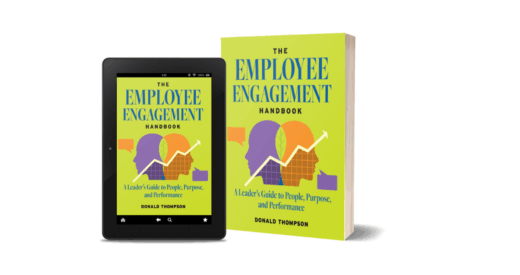In 2020, the International Dyslexia Association asserted that 15-20% of the population may have symptoms of dyslexia. Statistically, that means 1 in 5 of your colleagues may be affected and may require accommodations in the workplace. With that prevalence in mind, it’s important to know what dyslexia is, what it is not, and how you can help employees with dyslexia to do their best work.
What it is; what it is not
Dyslexia is a neurobiological learning disability that can make it difficult to recognize words, make sense of numbers, or spell accurately. According to the Mayo Clinic, dyslexia most explicitly affects decoding: a process that relates letters and letter combinations to their sounds. Dyslexia does not have a cure, but simple tools can help people with dyslexia to be more successful at work.
It is important to understand that dyslexia is not correlated to intelligence. In fact, the Yale Center for Dyslexia and Creativity identifies dyslexia as “an unexpected difficulty in reading in an individual who has the intelligence to be a much better reader.” An EY report on the value of dyslexia focuses on how the future of the workforce will need employees with skills like leadership, idea generation, and social influence – all competencies that come naturally to people with dyslexia. Famous examples of creative, intelligent, influential people with dyslexia help to drive this point home: Albert Einstein, Steven Spielberg, Whoopie Goldberg, Cher, Richard Branson. In fact, it could be said that many of these people thrived in their fields specifically because of their diverse perspectives and dynamic thinking styles.
Leveraging diverse thought
Creative perspectives and abstract thinking are major hallmarks of neurodiversity, which refers to the natural variations in human brain functions, especially around learning, thinking, and processing information. Embracing neurodiversity means recognizing the broad range of natural cognitive functioning, beyond the traditionally narrow definitions of normality and deviation. By doing so, we recognize that these conditions are not deficits, abnormalities, or problems to be solved. Rather, they are differences to be leveraged for increased creativity and innovation.
Neurodiversity and dyslexia are often linked to strong memory functions, problem-solving skills, and imaginative, abstract, critical thinking. In business, those characteristics may be the key to better problem solving and innovation, making people with dyslexia even more valuable as employees and leaders. Now, here is how you can ensure that you are providing the accommodations people with dyslexia and other learning or cognitive disabilities may require.
Accommodating employees with learning or cognitive disabilities
In working to accommodate employees with learning or cognitive disabilities, it is essential that you first reach out to each employee and ask what support they require for success. Neurodiversity comes in many shapes and sizes. One person’s accommodation may be unnecessary or ill-suited for another. In all cases, work with your employees to understand and provide the resources and accommodations they require.
Share content in different ways.
If you are sharing a company-wide memo, consider also sharing a link to a pre-recorded video of a relevant person reading that memo. Doing so gives people space and time to process information, allowing them to choose their preferred method of engaging with the material. For long-form writing or reports, consider including visual aids or audio descriptions. People with learning or cognitive conditions may prefer to analyze data through charts or diagrams instead of spreadsheets or Google Docs. For emails, visually separate the important pieces of content with bolded or differently-colored text or highlighting. Keep in mind that italics and underlining reduce readability and so should be avoided. For printed materials, use light-colored paper that is not white. Ideal colors are soft cream or pastels.
Provide text-to-speech and speech-to-text software for all devices.
Dictation and screen-reading software can have a meaningful impact on people with learning or cognitive disabilities. Some software programs, including Microsoft Office, already have these features integrated. Similar to a smartphone, these tools reduce the need for spelling or writing, making it easier for people to understand and process information.
Provide spelling and grammar checking software.
Aim to have a spelling and grammar checking software available for all employees. While most processing software comes with its own spelling and grammar checking tools, a browser extension, such as Ginger or Grammarly, can help employees as they write emails, social media posts, or even Slack messages.
Offer flexibility.
While some employers already offer options like flex time and remote work, these offerings may be critical differentiators for neurodiverse employees. However you can, make sure your employees have the option to work when and where they are most comfortable. This flexibility also applies to internal deadlines. Provide the option for extra time for any performance-related tasks. This flexibility should be implemented across an employee’s full work experience, starting with the interview process. If there are any timed tasks during an interview, ensure that you offer extra time and necessary assistive technologies.
Use dyslexia-friendly fonts.
Some aspects of typefaces — like letter spacing, letter shape, and the thickness or thinness of specific parts of a letter — can have a drastic impact on readability. Times New Roman, or similar Serif fonts, have ticks on most letters that can make reading more complicated. Sans-serif fonts do not have the extra design flairs that Serif fonts do and so are more easily readable for people with dyslexia. Certain Sans-serif fonts are widely available like Calibri, Verdana, and Century Gothic; others can be easily installed, like OpenDyslexic and Sassoon.
Build your skills for greater disability inclusion
These accommodations reflect a solid starting place to make your workplace more inclusive of all people with disabilities. Do what you can to learn more about accommodation, accessibility, and disability inclusion beyond the ADA and other compliance requirements. When you are more aware and more knowledgeable about learning disabilities, you can create a more accessible workplace and empower your employees to do great work.
This Spring, The Diversity Movement will launch a comprehensive 5-part course on disability inclusion and accessibility in the workplace. Sign up here, and be one of the first to join our course as soon as it hits the market.
As an advocate and ally for all identities, we encourage you to share these recommended accommodations with your Human Resources team, company executives, and other diversity champions. Use this guide as a launching pad to evaluate how accessible your workplace is and then begin to implement best inclusion practices. By making small changes to be more accommodating, you are taking another step on your business’s diversity and inclusion journey.
Jeyashree Haridoss is a first-generation Indian immigrant and proud woman founder of Sol, a platform that instantly connects travelers with interpreters. With the help of strong teams, she has ideated and executed diversity and inclusion programs at startups, NC State University, and SAS. Her mission? Pull in and empower people who have been pushed to margins.






